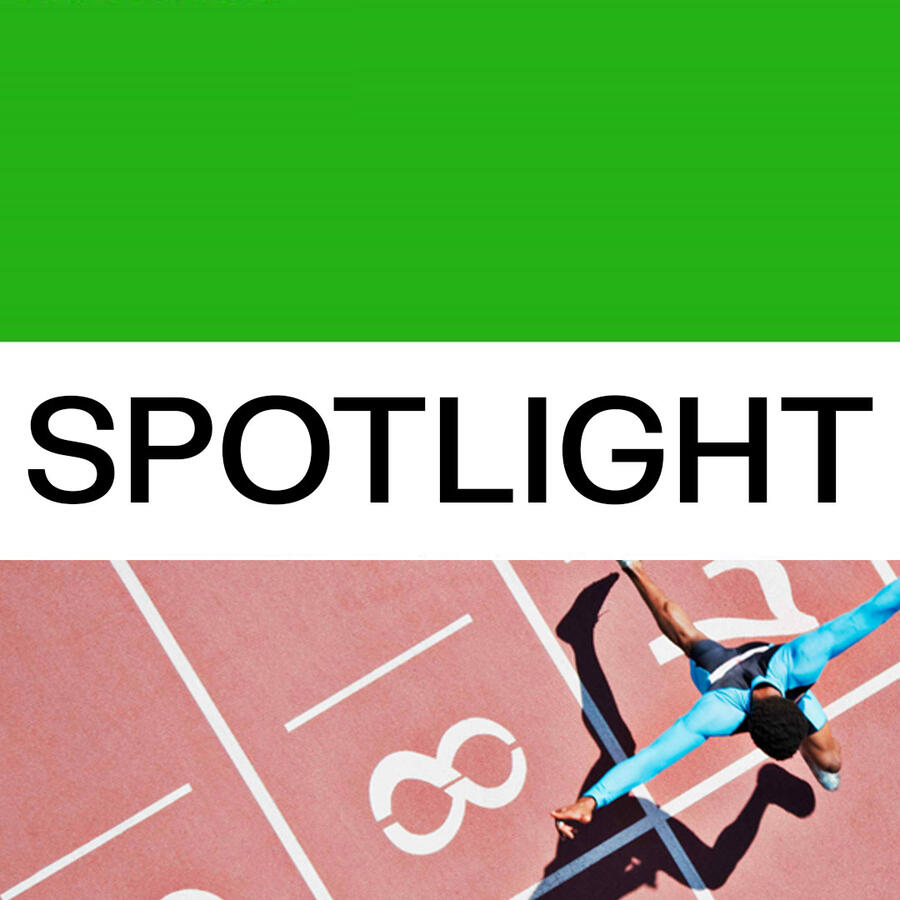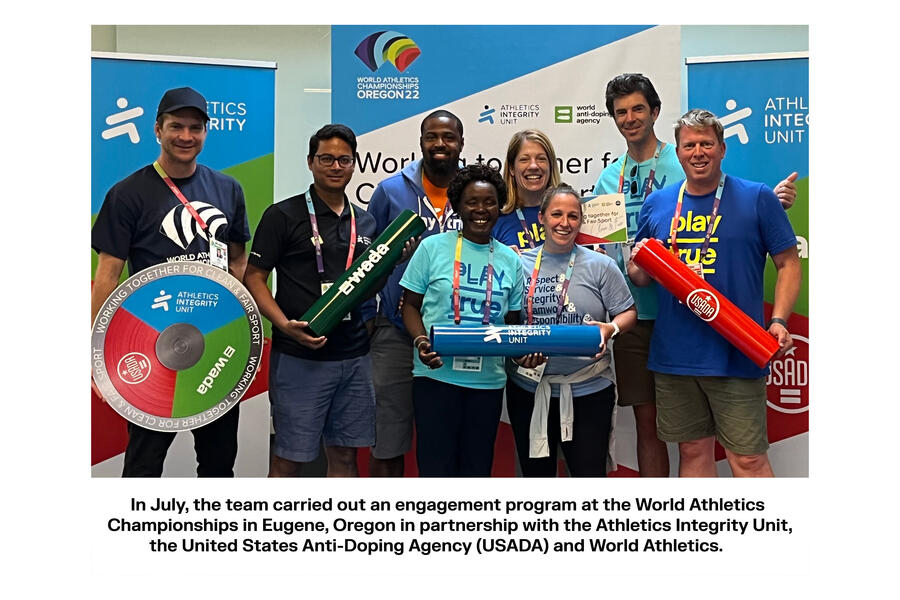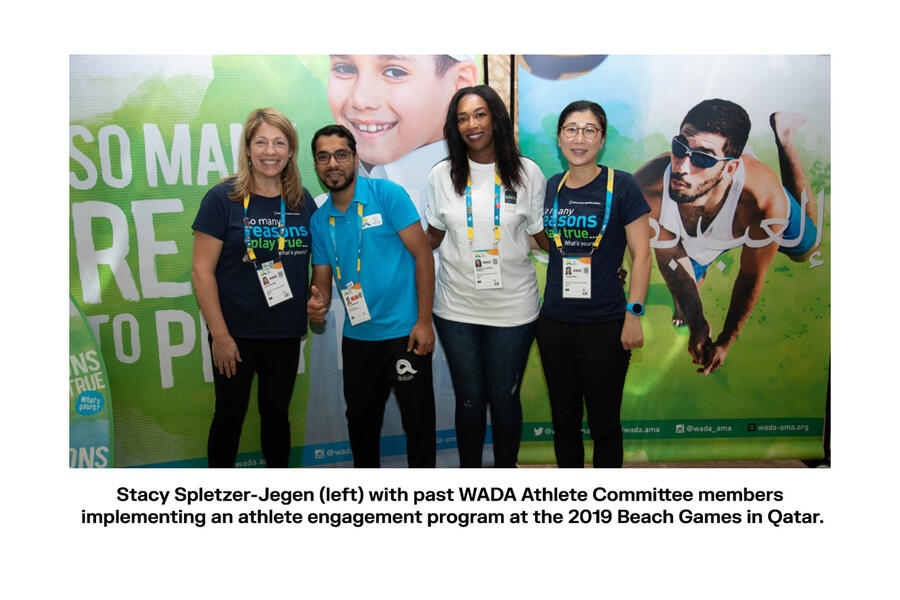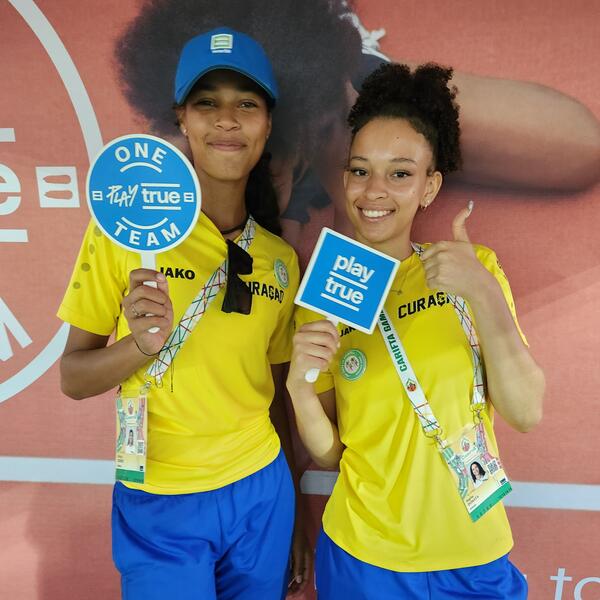Story
Athlete Engagement: The ‘Be Athlete Centered’ priority in action

In this latest edition of ‘Spotlight’, which keeps stakeholders up to date on the activities being carried out by the World Anti-Doping Agency (WADA) team and its partners, we look at recent WADA initiatives aimed at significantly enhancing the voice and influence of athletes in all facets of the organization. This and previous ‘Spotlight’ features are available here.
Athletes have played a central role at WADA since its establishment in 1999; and, thanks to the organization’s Strategic Plan for 2020-2024, their influence on all aspects of anti-doping policy and governance is significantly on the rise.
Based on six Strategic Priorities, each of which centers around athletes, the Plan forms the roadmap for WADA’s transformational journey over this five-year period.
The ‘Be Athlete Centered’ priority involves:
- engaging and empowering athletes to contribute to the development of anti-doping policies;
- building an easier anti-doping journey for athletes; and
- increasing the contribution that our programs deliver for athletes and their entourage so that they can build healthy and sustainable careers in sport.
In this Spotlight, we are pleased to share some initiatives under this priority that are now in full swing across the organization.
LEADING BY EXAMPLE
Leading the charge are WADA President Witold Bánka and Vice-President Yang Yang, both of whom began their terms at the start of 2020, coinciding with introduction of the Strategic Plan. Before and upon taking office, the President pledged to make good on WADA’s commitment and engage meaningfully with the athlete community.
WADA President Witold Bańka said: “At the core of the Strategic Plan is a desire and commitment to ensure that our activities and priorities are athlete centered. As a former elite athlete, I understand the importance of listening to the views of athletes worldwide and addressing the matters that are of most interest to them. For my part, I have had many productive meetings with athlete committees and groups that have helped inform our actions, with many more meetings planned over the coming months. Beyond this, the Agency is looking for all opportunities to engage athletes to further enhance the global anti-doping system.”
Witold Bánka and Yang Yang have years of first-hand experience competing as an elite sprinter and speed skater, respectively, and as a result have acquired keen insight into what it takes to compete at the highest level of sport as well as a deep passion to work in the interests of athletes while delivering WADA’s mandate
TEAM EFFORT
Overseeing WADA’s ambitious undertaking to Be Athlete Centered is WADA’s Athlete Engagement team, headed by WADA’s Deputy Chief Operating Officer Stuart Kemp and Athlete Engagement Senior Manager Stacy Spletzer-Jegen.
The scope of Athlete Engagement extends throughout WADA, touching all areas of its work. While Kemp and Spletzer-Jegen both acknowledge they are in the early stages of actioning the Be Athlete Centered priority, they can already point to a growing list of accomplishments, including:
- a more engagement-based presence at Major Events such as during the 22nd Commonwealth Games in Birmingham, England;
- the inclusion of athlete representatives on WADA’s Independent Observer teams, which monitor and report on all aspects of anti-doping programs during Major Events;
- the establishment of two pilot projects (Clean Sport Network/Forums) to assess the viability of ongoing virtual engagement with athletes;
- athlete surveys to gain crucial feedback and KPIs; and
- the increasing use of digital platforms to interact with athletes, such as:
- Anti-Doping Administration & Management System (ADAMS);
- Anti-Doping Education and Learning Platform (ADEL);
- Athlete Central; and
- WADA’s website and social media.
The thread intertwining all the recent activities is an increase in consistency across the organization. “What we are seeing now is a more coherent approach,” says Deputy COO Kemp. “For example, we now consider more thoroughly how what we do affects athletes. We have always had different touchpoints and now we are looking at them from 30,000 feet to see how they relate to each other and how we can bring them together to start engaging athletes in a coherent manner.”
SHIFT IN ENGAGEMENT
WADA’s Athlete Engagement Program originates from WADA’s Athlete Outreach Program, which was first developed in 2001 to raise awareness and promote clean sport directly to the athlete community at major sporting events around the world.
This shift is more than just a name change. Historically WADA’s outreach teams were mainly comprised of anti-doping practitioners; while, at the recent World Athletics Championships in Eugene, Oregon, U.S., and the Commonwealth Games in Birmingham, U.K., WADA’s Athlete Engagement teams were made up of athlete leaders that were able to have meaningful discussions with competing athletes and entourage. These same athlete leaders also held face-to-face meetings with local athlete committees/commissions and other athlete representatives. The meetings were led by WADA Athlete Committee Chair Ben Sandford and other athletes well-versed in anti-doping.
“It’s all part of the shift in strategy,” explains Spletzer-Jegen. “These face-to-face interactions are prime examples of how we are leveraging athlete voices within WADA. They really help to break down any perceived barriers between our organization and different athlete viewpoints. It is quite simply much easier for athletes to relate to other athletes.”
ATHLETE COUNCIL
The vehicle with arguably the greatest potential for athletes to exert their influence going forward is a new 20-member Athlete Council, which is set to replace the current 12-member Athlete Committee on 1 January 2023.
The Council will represent, support, and promote the voices of athletes on anti-doping matters and will be the avenue for athletes, chosen by athletes, to assume important seats within WADA’s governing bodies. Specifically:
- the Council Chair will be appointed to WADA’s Executive Committee (ExCo);
- two members will have seats on WADA’s Foundation Board; and
- the Council will be in charge of appointing athlete representatives to other WADA bodies, including WADA’s various Standing Committees, which report into the Executive Committee.
“Those Standing Committees play a key advisory role,” says Kemp. “All the substantial debates about anti-doping policy and priority development take place in the Committees; and, I think it is a critical area for athletes to not only know about but be involved in.”
The election and appointment process for the 20-member Athlete Council is well under way. The first 13 members—five named by the International Olympic Committee’s (IOC’s) and International Paralympic Committee’s (IPC’s) Athlete Commissions and eight elected by Athlete Commissions of International Federations—were announced on 6 September. The final seven athletes will be selected by the Athlete Council Appointment Panel to fill skills and diversity gaps. The deadline to apply is 30 September and the selected athletes will be announced in December.
“In the past, WADA relied on the Athlete Committee to capture the athlete voice, whereas these days there is a renewed focus on proactively engaging with athletes in a number of ways to get such feedback,” said Athlete Committee Chair Sandford. “This will help to complement the work of the new Council and will go a long way to improving WADA’s perception among athletes and the effectiveness of anti-doping more generally.”
PASSING THE BATON
The new Athlete Council will be well-served by the work undertaken by the current Athlete Committee, in particular the creation of the Athletes’ Anti-Doping Rights Act and the development of the Athlete’s Anti-Doping Ombuds Program pilot project.
The Athletes’ Anti-Doping Rights Act was created by the Athlete Committee in consultation with thousands of athletes and stakeholders worldwide, and aims to ensure that athlete rights within anti-doping are clearly set out, accessible, and universally applicable.
The Ombuds Program, meanwhile, is a one-year pilot project set up to guide athletes through the anti-doping process, providing independent advice, support and resolution of disputes. It is seen as another important step forward for the rights of athletes and further underscores WADA’s commitment to be more athlete-centered.
“In the past couple of years, we've really been driven by our Strategic Plan but also by our own Athlete Committee,” says Deputy COO Kemp. “Members of our Athlete Committee, including Chair Sandford, are very passionate about certain topics. So they’ve been at the forefront of all the athlete-centered things that we are doing right now.”
With increased representation and a broader scope for involvement and inclusion, it is hoped that the Athlete Council will build on the legacies of the Athlete Committee to take athletes’ rights and representation to new heights in the future.
“Going forward,” Kemp concludes, “involving athletes is going to be perceived to be far more substantial, because they’re going to be more involved within our governance and in a very meaningful way.”
To learn more, we invite you to visit the Athlete Engagement section of WADA’s website



